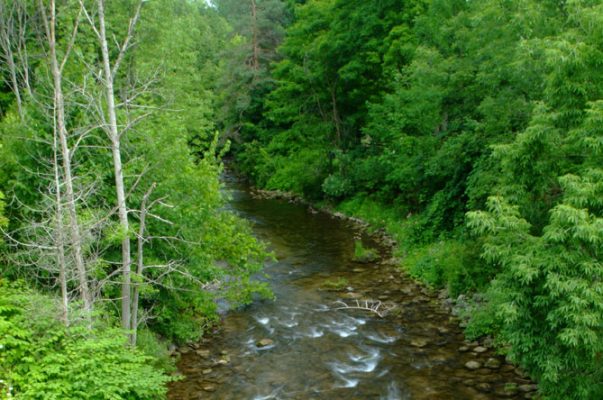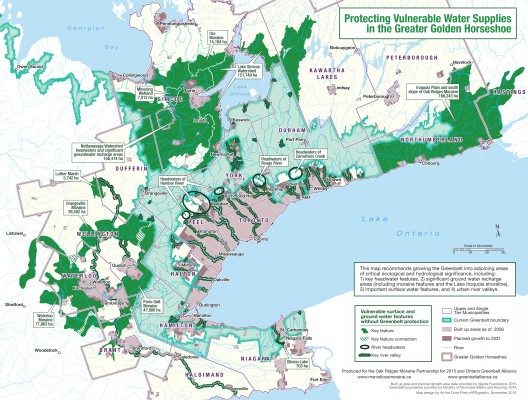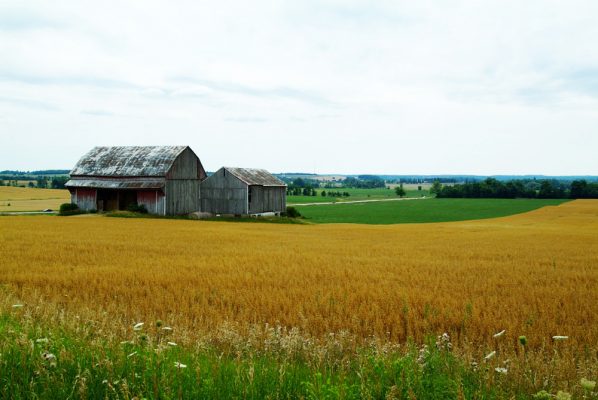Ontario Nature Blog
Receive email alerts about breaking conservation
and environmental news.
© Lora Denis
East Gwillimbury area © Tim Hagen
On Tuesday, I headed to Mississauga’s Credit River for the government’s announcement on their proposed amendments to the plans that protect the Greenbelt, Oak Ridges Moraine, and Niagara Escarpment, and guide growth in the Greater Golden Horseshoe (GGH).
These amendments are a promising move towards building ecological resiliency and healthy communities in an area under tremendous pressure from urban development. Bold leadership is now needed from the Province to quickly and decisively act on these good intentions to protect water, nature and communities in the GGH.

“We commend the Province for taking immediate steps towards growing our Greenbelt into 21 urban river valleys, their coastal wetlands and select water sources like Lake Gibson,” says Joyce Chau, Executive Director of EcoSpark. “To truly protect the region’s water, we are expecting swift action to ensure a bluebelt of vulnerable water supplies in the GGH, like the Oro Moraine, just north of Barrie, are added to the Greenbelt.”

Earthroots, EcoSpark, STORM and Ontario Nature have been leading voices for bluebelt and natural areas protection in the GGH. We are calling for stronger protection of the region’s natural areas that support wildlife and buffer communities from the impacts of climate change.
“We’re pleased that the Province has stepped up to the plate to protect and map the region’s natural heritage system,” says Caroline Schultz, Executive Director of Ontario Nature. “This is our insurance policy to enhance community resilience to the impacts of climate change.”
The government must contain urban sprawl and direct infrastructure to existing built-up areas to protect natural areas and headwaters.
“Our worry is that the needs of rural communities are getting lost in the mix.” says Debbe Crandall, Director, Policy, for Save the Oak Ridges Moraine (STORM) Coalition. “We need a comprehensive re-think on how to spark innovation to achieve ecological and social system health while keeping the rural countryside viable.”

Today’s announcement marks the final chance for public input into the Coordinated Land Use Planning Review. It is a tremendous opportunity for the Province to take bold action in the face of increasing pressure from urbanization.
“The Province’s draft amendments move us in the right direction,” says Josh Garfinkel Director, Southern Ontario Campaigns, for Earthroots. “We will be pushing them for strong implementation of these plans.”
Climate change and a rapidly growing population necessitate strong leadership from the Province. We must protect water and nature, and build sustainable communities, or more ground will be lost.

Gananoque Lake Nature Reserve © Smera Sukumar
I disagree with the positive view of what the government announced. It is good that the Greenbelt is being expanded in the way it is being suggested. However, at the same time there were four reductions, which were significant subtractions to what is termed “The Protected Countryside.” Unlike the lands being added which pose regulatory challenges (wetlands, steep slopes, floodplains), these lands are flat in easy to develop. Two pose serious environmental concerns. One is in the vicinity of Boyd Park, where in the past urban expansions such as this have been used to justify road construction in an old growth forest. Another in Durham Region has developed planned on both sides of Bowman’s Creek. In addition they have announced an end to what has been a 13 year freeze on the Oak Ridges Moraine. This is to be done through an amendment to the Oak Ridges Moraine Conservation Plan to facilitate urban boundary expansions through watersheds studies. I experienced such an urban expansion guided through a watershed study in Niagara and it was a joke-resulting development wiped out through more flooding every bridge in Short Hills Provincial Park.
Hi John,
Thanks for your comment. I definitely share your concerns around reductions in the Protected Countryside. There is a lot of changes to analyze in these four plans, some positive, some negative. I look forward to connecting with you at OGA meetings in order to take a closer examination of these details and the large impacts they may have across this landscape.
thanks Joshua for recognizing the social and ecological needs of the rural community . we are under seige from government sponsored industrial wind and solar projects that are tearing our communities apart. In that process family farms are being destroyed and local food production reduced, leaving an ever bigger carbon footprint as imported food is relied on by our city neighbours. we need to work to put innovative and sustainable production and distribution first in the rush to heal the earth and help the climate.
Hi Judy,
Thanks for you comment! These land use plans certainly do not address all the issues/challenges facing rural and agricultural communities. A better understanding of the impacts of all infrastructure projects (where approvals are largely made outside land use planning decisions) needs to built in order to help promote local agriculture, as well as natural areas in this region.